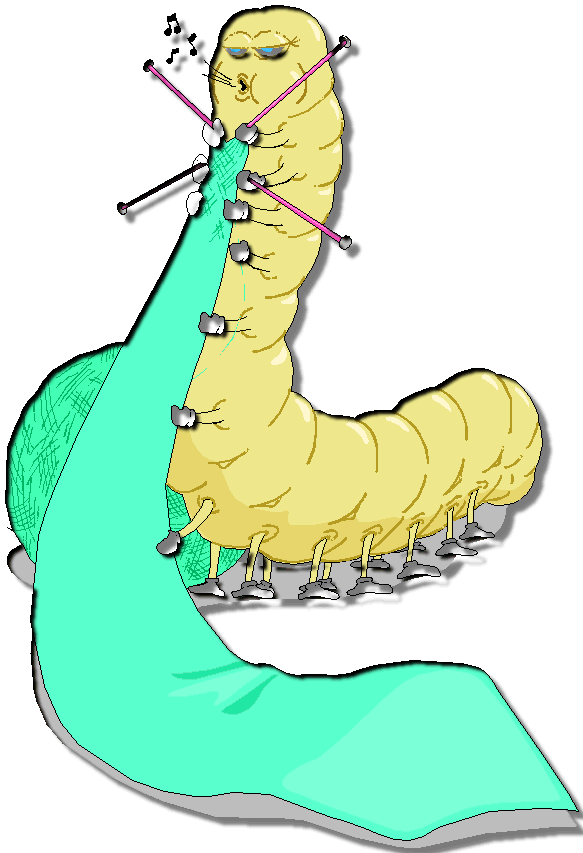ENTOMOLOGY 2040
SECTION IX
INSECTS AS FOOD AND FIBER PRODUCERS |
 |
LEARNING OBJECTIVES OF SECTION
After completing this section students should be able to:
- Describe the various types of insect-produced materials used by humans.
- Describe the process of rearing silk worms and explain how silk is produced.
- Explain how beeswax is produced and describe the various uses of this material by bees, and by humans.
- Describe the production of royal jelly and discusss the uses of this material by honey bees and in human industries.
- Describe the process of producing shellac. Explain why this material is not as broadly used as in the past. Explain why the production of shellac is so labor intensive.
- Describe the source of cochineal dye and discuss the historical uses of this dye, its current uses and the sociological effects of the arrival of the Spanish.
- Describe the source of cantharidin and explain how it is of value to insect. Describe the historical use and misuse of this chemical.
- Explain how certain insect groups have been used, and are used in medicine.
- Describe the "new" products that insects create that are of value to humans and explain how they presently contribute to our way of life.
Terms: Insect secretions, silk, beeswax, hypodermal glands, royal jelly, mandibular glands, hypodermal glands, cochineal, cantharidin, galls, tannic acid.
- Insects as Food and Fiber Producers.
- 1. Insect secretions.
- a. Silk - from salivary glands of Bombyx mori - silk worm.
- b. Beeswax - natural secretion.
- Honey bee Apis mellifera, adult hypodermal glands.
- c. Royal jelly. Secretion of mandibular glands of "nurse" bees.
- d. Shellac. "Wax" from scale insect hypodermal glands.
- 2. Insect bodies.
- a. Cochineal - red dye from pulverized bodies of mealy bug.
- Dactylopius coccus. "Pest" of prickly pear cactus.
- b. Cantharidin: From dried bodies of blister beetles (Meloidae) causes blisters
on skin of vertebrates.
- c. Insect bodies as lures, fish bait.
- d. Insect bodies used in medicine.
- 3. Insects collect, modify products.
- a. Honey bees collect nectar.
- 4. Insects create new products. Cause "insect" galls on plants.
Some are valuable to humans.
- a. Tannic acid - oak galls.
- b. Galls - source of finest dyes and most permanent inks.
STUDY QUESTIONS
- Where did the production of silk originate?
- What is the only food plant of the silkworm moth?
- How is beeswax used by honey bees? How is it used by humans?
- How does royal jelly affect the development of honey bee larvae? How is it used by humans? How do beekeepers get honey bees to make royal jelly in large quantities?
- What is the origin of shellac? What is stick lac? Why is its production limited to undeveloped countries?
- What is the source of cochineal dye? How did it influence the treatment of native Americans by the Spanish?
- What is "maggot therapy"? How was it discovered that maggots could be used in medicine?
- What is the source of cantharidin? How is it used by the insect? By humans?
- Describe the process by which honey bees convert nectar to honey.
- What is a gall? How is it formed?
Go to Section X - Insects as Decomposers
<< back

